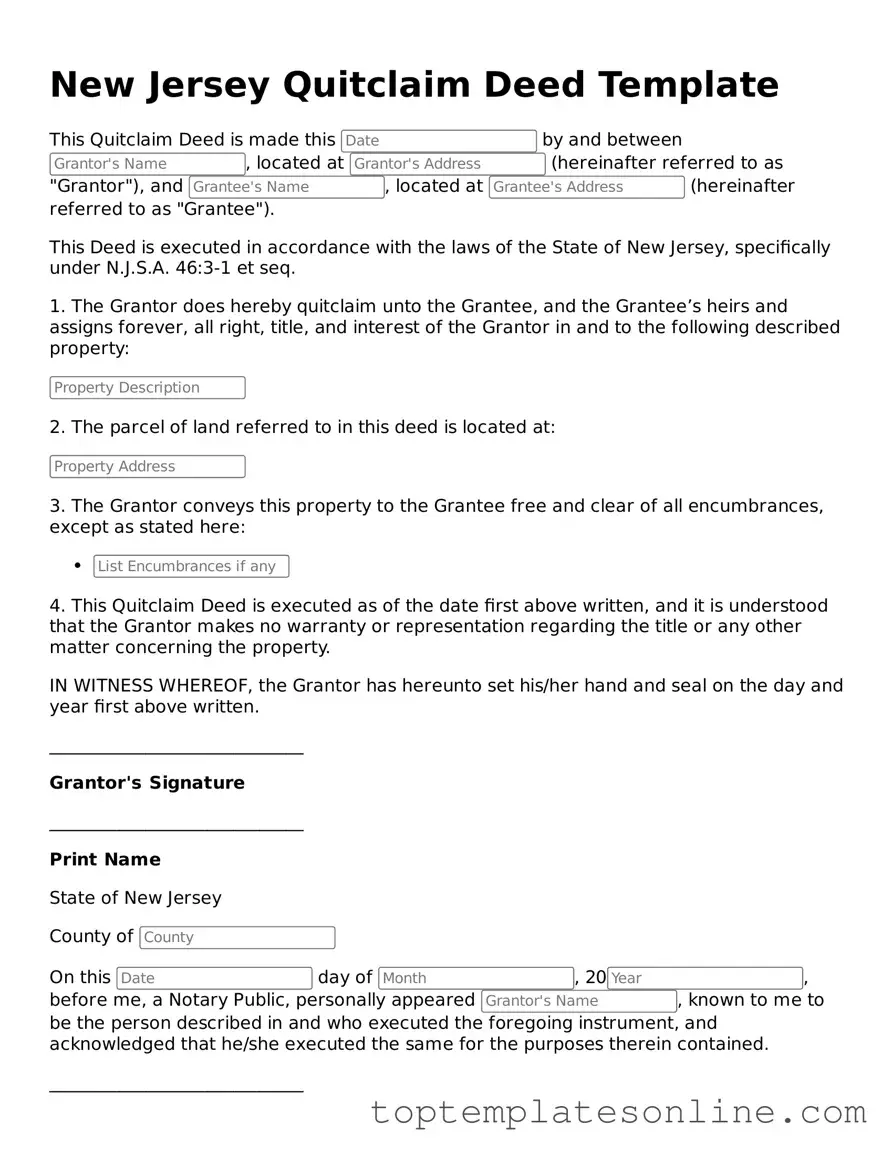Blank Quitclaim Deed Template for New Jersey State
A Quitclaim Deed is a legal document used in New Jersey to transfer ownership of real estate from one party to another without any warranties regarding the property’s title. This form is particularly useful in situations where the parties know each other well, such as family transfers or divorces. Understanding how to properly utilize this deed can simplify the process of property transfer while minimizing potential disputes.
Customize Quitclaim Deed Here
